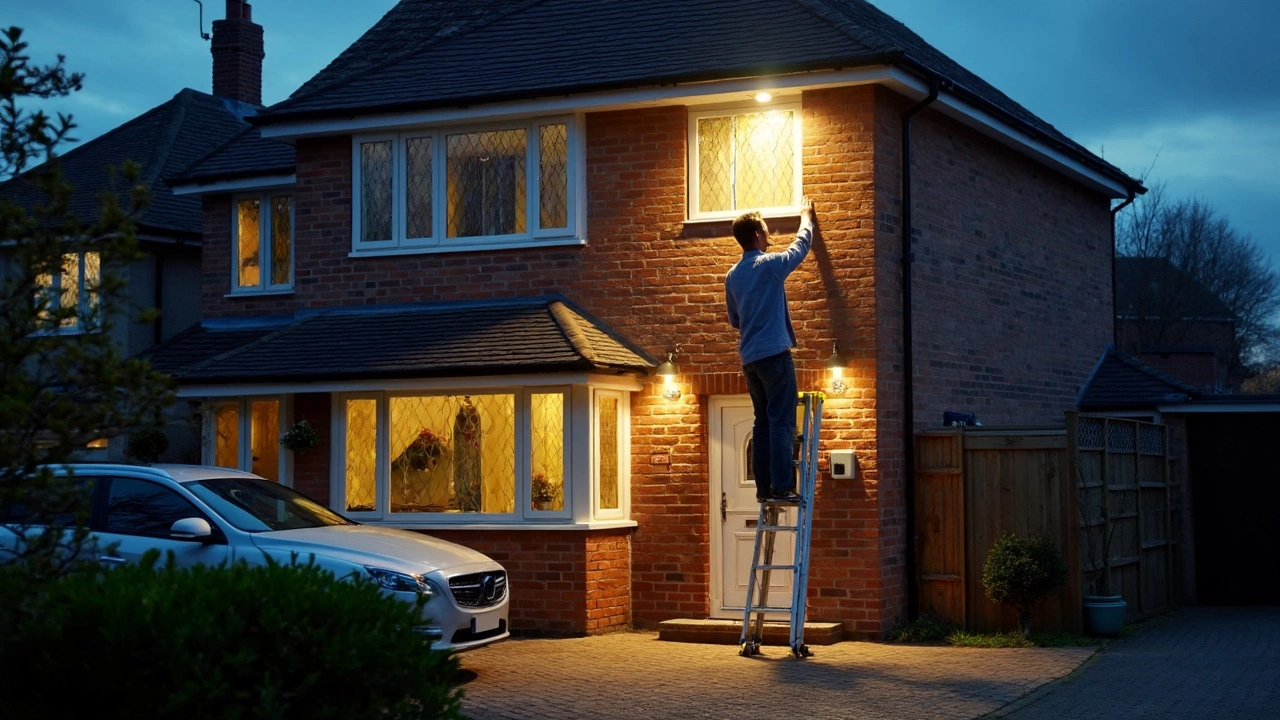Ever noticed how a bright light can scare off a prowler? That’s the power of security lights. They’re not just for looking good at night; they’re a low‑cost way to make your home less attractive to thieves. In this guide we’ll break down what security lights actually do, why they’re different from regular floodlights, and how to pick the best set‑up for your place.
When a camera or doorbell sees a dark yard, it can’t capture much detail. A security light solves that problem by flooding the area with clear illumination exactly when motion is detected. The sudden glare startles intruders and gives you a usable video feed, which is why many police departments recommend them for crime‑prone neighbourhoods. Plus, a well‑placed light can help you avoid trips and falls on your own property – safety isn’t just about stopping burglars.
Another benefit is energy savings. Modern LED security lights draw a fraction of the power a traditional halogen floodlight uses, especially when paired with a motion sensor that only turns on when needed. Some models even run on solar panels, so you can protect a shed or garden without adding to your electricity bill.
First, decide where you need coverage. Entry doors, driveways, backyards, and dark corners are the usual suspects. Measure the area and look for a light with a beam width that matches – a narrow spotlight for a driveway, a wide‑angle lamp for a patio. Next, think about the trigger: infrared motion sensors are common, but they can be fooled by animals. Look for a dual‑sensor that combines PIR (passive infrared) with a microwave detector to reduce false alarms.
Brightness matters, too. Most security lights are rated in lumens; 700‑900 lumens is enough for a driveway, while 1,200‑1,500 lumens works well for a larger yard. If you’re in a neighbourhood with a lot of street lighting, you can go a bit lower to avoid harsh glare. Adjustable settings let you set the timer – a quick 30‑second flash might be enough to deter, while a longer 2‑minute stay provides better footage.Installation is usually a DIY job if you’re comfortable with basic wiring. Mount the fixture at a height of 8‑10 feet to maximise coverage and keep it out of reach of vandals. Make sure the sensor is angled slightly downward so it catches people walking toward your house, not just passing traffic. If you’re in the UK and unsure about wiring, hiring a qualified electrician will keep everything up to code and safe.
Finally, consider smart features. Many newer lights connect to Wi‑Fi and let you receive push alerts on your phone when motion is detected. Some even integrate with existing CCTV or alarm systems, so a single event can trigger lights, cameras, and a siren at once. Check whether the app offers customizable zones – you can ignore motion from a neighbour’s garden while still protecting your own drive.
In short, a good security light does three things: lights up dark spots, alerts you to movement, and works efficiently. By matching the right brightness, sensor type, and smart capabilities to your property, you’ll get a reliable deterrent that’s easy on the budget. Ready to brighten up your night security? Start with a quick walk around your home after dark, note the shadows, and pick a light that fills them in. Your peace of mind is just a switch away.

Curious about how high to set your security lights for the best coverage? This article explains the ideal height for different types of outdoor security lights, why it matters, and how it keeps your property safer. We break down practical tips and real-life mistakes to avoid. Learn how to outsmart both intruders and annoying false alarms, plus a few tricks that might surprise you. Get the facts before climbing that ladder.